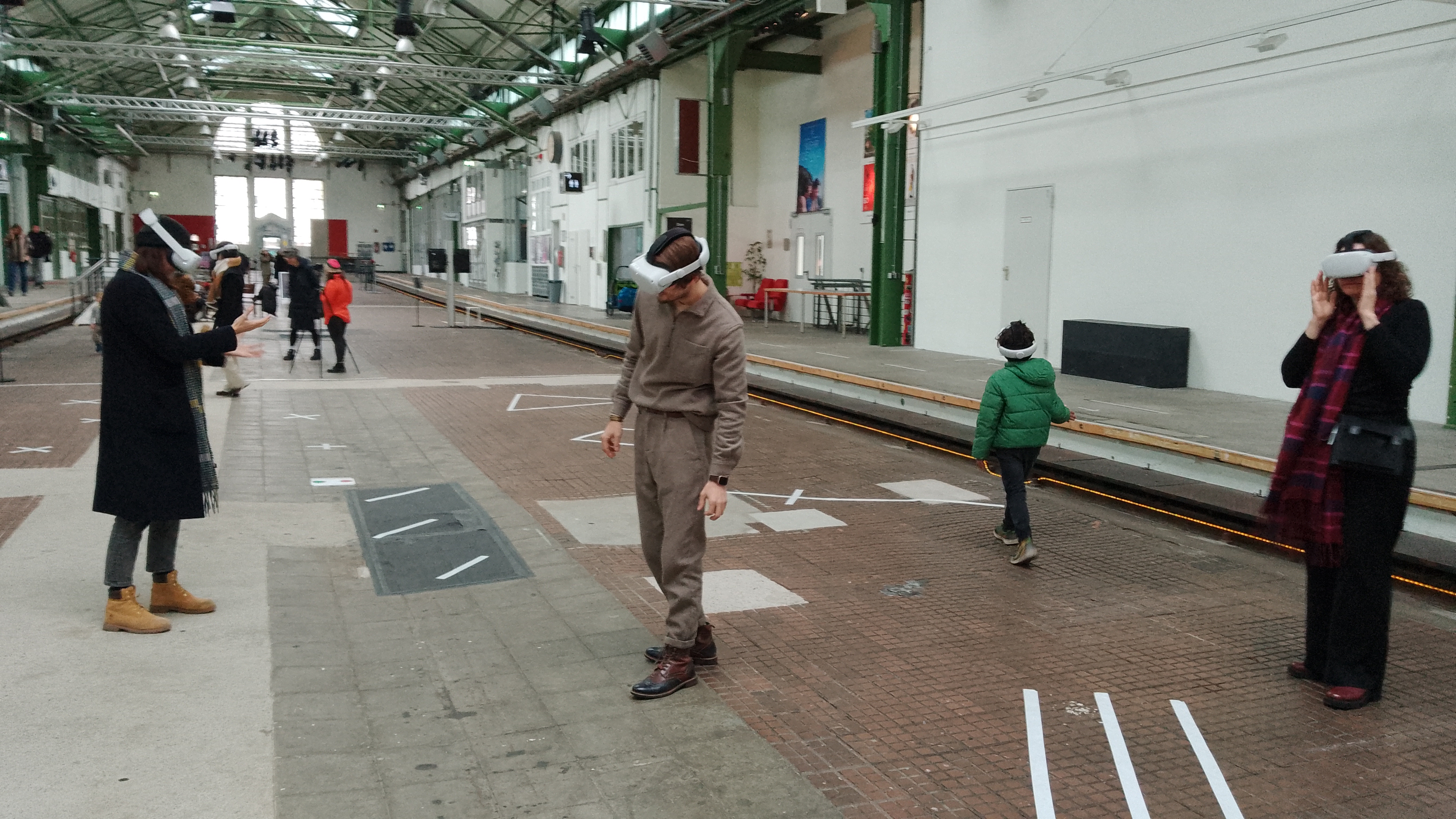Digit(al) - on touching clouds
- a choreographic object
How many angels fit in a cloud? This outdated medieval scholastic problem reemerges today in guise of clouds, bits and data. While much our work consists of manipulating data, we seldom ask: how does it feel like to touch data? What do clouds feel like?
Digitus (lat. “fingerbreadth“, „number“) stems from the Proto-Indo-European *deyǵ- (“to show, point out”). New technologies enable us to, quite literally, touch and handle digital objects. This folding back of touch onto abstraction provides a fertile setting to explore both their materiality and the way they, in turn, move us through space: a choreography.
Digit(al) is an augmented reality piece, as well as a choreographic installation: in a sufficiently large and empty space, informal seating opportunities
and headsets are offered to the audience. Those that choose to put on a headset will see the space and people around them enriched with virtual floating stones and leaves, which respond to touch and movement in various ways. The exploration of the virtual space guides them through the real space, producing a choreography that can be watched by other audience members. It is possible to come and go, the work might work very well in the foyer of a theater, or in a festival lounge or similar - as long as it is not too noisy.
Digit(al) offers unusually refined modes of bodily interaction with the objects represented as point clouds. It draws on techniques from artificial life (e.g. swarm behavior) and cutting edge GPU capacity to maximize the bodily immersion of the viewer: many even report having ‘felt’ the virtual objects, feeling heat or tingling on their skin.
Digit(al) raises questions about togetherness in a world, in which digital technologies augment/alter our sensory input, and shapes our behavior and movements. But it also goes beyond technology to address more generally questions of perception and cognition.
Finally, Digit(al) makes use of the immersiveness of VR: it lifts the users into a dream-like state, questioning the fixity of things, and seizes the opportunity to turn the experience into a ritual for healing, a prayer to Maria Mulambu, the Afrobrazilian protectress of the poor and marginalized.
Digit(al) has proven to be accessible and of interest for a wide range of audiences (age, cultural background, technological affinity, differently abled).
Minimal technical requirements:
- four Oculus Quest 2 headsets
- an empty space of at least 50 sqm
